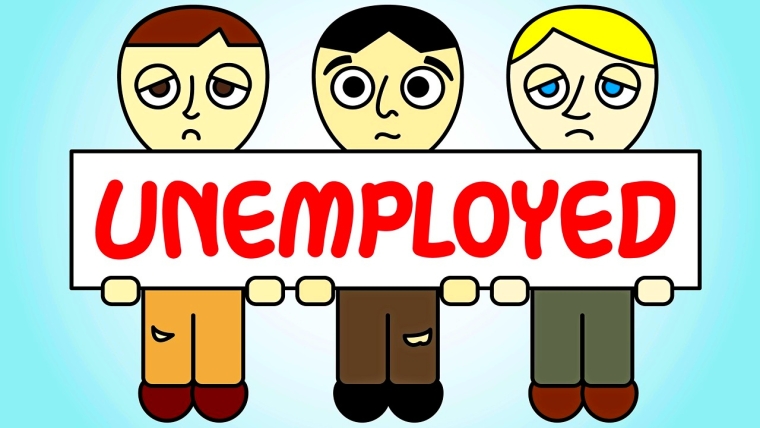
So, what's it to be? The most grim jobs market in nearly nine years? Or a turning point, signalling an improvement?
Labour market figures due to be released on Wednesday, November 5, will tell us whether our unemployment rate has kept rising, or whether there are now encouraging signs. At a pinch, the figures might actually tell us both things. So, yes it could be some bad news tinged with signals of better news ahead.
Our unemployment rate hit 5.2% in the June quarter. The Reserve Bank (RBNZ) forecast in its August Monetary Policy Statement (MPS) that the rate would rise to 5.3% for the September quarter, but that this would be the peak, with the rate declining (slowly) to 5.2%, by the end of 2025, 4.9% at the end of 2026 and 4.5% by December 2027.
If the rate has indeed hit 5.3% in the September 2025 quarter then this would be the highest jobless figure since December 2016.
And it will be the peak (at least so far) of a rise that has lifted the jobless rate from the low point of just 3.2% in the December 2021 quarter as the full impact of the pandemic-closed borders put a ceiling on our pool of potential employees and saw the labour market thoroughly squeezed.

The RBNZ no longer has to consider 'maximum sustainable employment' in its monetary policy targeting (these days known as the Monetary Policy Committee Remit), as the current Coalition Government removed this requirement, switching back to a sole focus for the RBNZ on achieving inflation between 1% and 3%, with a focus on the 2% midpoint.
That doesn't mean though that the unemployment figure isn't important for the RBNZ. It is. And arguably it has some extra importance at the moment when the RBNZ is keenly watching for signs that the cuts it has been making to the Official Cash Rate since August of last year (taking it down from 5.5% to a current 2.50%) are reviving the economy.
And whether the economy is really recovering or not has become a point for active debate. If the latest unemployment figures do suggest that the labour market is stabilising then this will offer positive signals that the faltering economic recovery is starting to (finally) get some sort of grip.
As is often said the labour market is a 'lagging indicator', with joblessness tending to still be on the rise even as the economic cycle has moved on and is improving.
But the RBNZ has become fairly concerned about the "cautious behaviour" it is seeing from households. After the first cuts were made to the OCR in the latter part of 2024 the economy did appear to be recovering, with GDP bouncing back from a horrible September quarter 2024 1.1% slump with a 0.4% rise in the December 2024 quarter and a 0.9% lift in the March 2025 quarter.
Then everything came back to earth with a bump, and a 0.9% GDP fall, in the June quarter. (The size of this figure is being convincingly discredited, although clearly the economy was misfiring in the quarter, just perhaps not as badly as suggested by that headline figure). And while we won't see the September quarter GDP figure till December 18, high frequency economic data is suggesting that after a reasonable uplift in activity through July and August there was another stumble in September.
The RBNZ has tried to resuscitate the economy with the super-sized 50 basis point cut to the OCR it made on October 8, at which time it noted that while the high frequency data suggested economic activity recovered "modestly" in the September quarter, "there remains significant spare capacity in the New Zealand economy".

The main intention of the jumbo-sized OCR cut was clearly an attempt to give some confidence to the New Zealand consumer. It was a cue to go out and spend some money and get the economic wheels turning.
Confidence has been in short supply and so if an unemployment figure of 5.3% was to be announced this coming Wednesday it would not do great things for the feelgood factor. And the fact is, people need to feel better about themselves in order to start coming out of their shells again and spending more money, which will get the economy rolling again, and will produce more jobs.
But of course, if people are worried about job security, they will be reluctant to spend money. The sooner people see that the jobs market has stabilised then the sooner they will feel more secure in their own jobs.
So, while the RBNZ doesn't have any need to specifically target maximum sustainable employment any move, it could certainly do with some better news on the job front this coming Wednesday. It doesn't need further knocks to the currently brittle confidence out there in NZ Inc.
What sort of figure are we going to get on Wednesday then? Well, 5.3% does appears to be the favourite, though some economists are saying the rate may have held at the 5.2% level it was on in the June quarter.
There do seem to be signs that the September quarter could well be the peak though.
Latest Statistics NZ Monthly Employment Indicators (MEI) figures show a 0.3% rise in filled jobs for September, following a revised 0.1% increase in August. The MEI figures tend to end up getting revised a lot - and almost always down - but there's enough in the latest data to suggest that the labour market has indeed now at least stabilised.
The MEI figures are not directly comparable with the official unemployment figures as they are sourced quite differently - coming from Inland Revenue data - but they nevertheless have tended to be quite a good indicator of future trends.
Assuming a figure of around 5.3% is what we get, then, what will the RBNZ's approach be?

Well, interesting.
Since the RBNZ has actually forecast 5.3% to be the figure, the assumption would be this would not change its mind on anything.
The final OCR decision for 2025 is on November 26. After that the next decision will be on February 18, which will be the first OCR review presided over by incoming Governor Anna Breman.
With the November decision being the last one for nearly three months, the RBNZ will want to ensure the right kind of tone is set for the summer period.
The wholesale interest rate markets are currently pricing a 25 basis point drop (to 2.25%) to the OCR in November as a near certainty, with about about a 1-in-4 chance of a follow-up 25 pointer in February.
Given that there is universal expectation of a 25 point cut, then the reasonable expectation is that the RBNZ will go ahead with such a cut regardless of what the unemployment figure is.
An unexpectedly bad figure, IE over 5.3%, might possibly get the RBNZ at least thinking about a 50 point cut, but it is to be imagined the central bank won't want to restrict the options of the new Governor when it comes to the February OCR review.
So, to that end, the likely impact of these unemployment figures is more likely to be in the kind of tone the RBNZ strikes. A 5.3% figure or worse would likely see fairly 'dovish' language from the bank, leaving the path open for the OCR to be lowered to 2.00% in February, while a better than expected unemployment number, and one that perhaps points toward the labour market starting to recover, could see more 'hawkish' language adopted by the RBNZ that would perhaps direct the market toward an expectation that 2.25% may be the bottom of the current cycle.
I'll leave you with some comments from ASB senior economist Mark Smith, who's expecting the unemployment rate will stay at 5.2% for the September quarter.
"Labour market conditions look to be stabilising," Smith said.
"The worst is behind us, but we don’t expect to see a meaningful lift in employment until 2026. The large decline in the average hours worked suggests firms may be hoarding labour. The weak demand backdrop and concerns that the recovery will be sluggish may make firms more hesitant to take on new staff until the recovery gains traction.
"Nonetheless, we suspect that the unemployment rate is likely at or past its peak," Smith said.
"Low growth in the working age population and the discouraged worker effect should result in modest labour force growth, at best. Stronger growth in the demand for labour relative to labour supply should see excess capacity gradually erode with the unemployment rate moving towards the 4% to 4.5% Goldilocks zone by the end of next year."
ASB economists expect just one more OCR cut from the RBNZ – a 25 point reduction in November to 2.25%, with more monetary policy support needed to push employment concertedly higher.
"We currently expect 2.25% to be the low point in the OCR for this cycle, but we see the risk of the OCR going lower if data suggest the economic recovery is struggling to get traction."
*This article was first published in our email for paying subscribers early on Friday morning. See here for more details and how to subscribe.
3 Comments
4.5% by December 2027 would be a terrible outcome. That would be 6 years since they started fighting inflation, and 3.5 years since inflation was back in band. And 4.5% is 1.3% higher than before the RBNZ decided to cool the economy.
They started too late, went too high, then took too long to come down, all at the expense of the economy and jobs.
The last few years in NZ will become a case study of how to totally mess up the handling of a supply side shock bout of inflation. Absolute horror show. We have permanently scarred the country's economy and will see significant societal challenges over the coming years as the economies of whole towns collapse and dirty politicians 'other' beneficiaries and immigrants - driving a wedge between kiwis to further their grubby careers and the aims of their backers.
The unemployment rate was at 3.2%, that’s unsustainable. Every business was struggling to find labour. Hard to know whether that was causing supply side or demand side inflation, but either way they needed to cool things a little. Instead they waited, then cooled way too much, then waited too long to drop OCR, then dropped too slowly.

We welcome your comments below. If you are not already registered, please register to comment.
Remember we welcome robust, respectful and insightful debate. We don't welcome abusive or defamatory comments and will de-register those repeatedly making such comments. Our current comment policy is here.